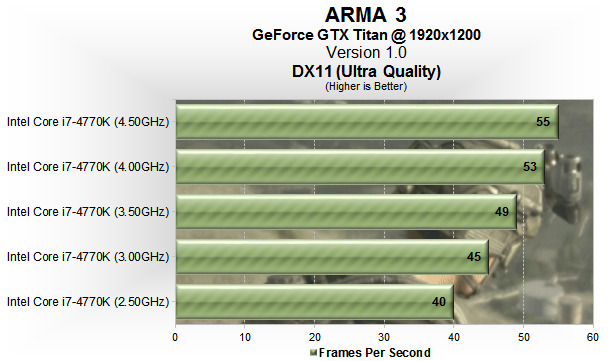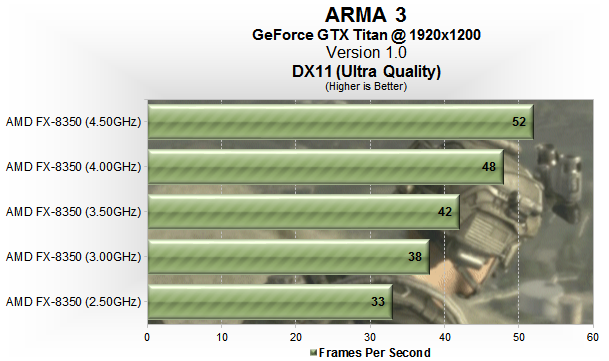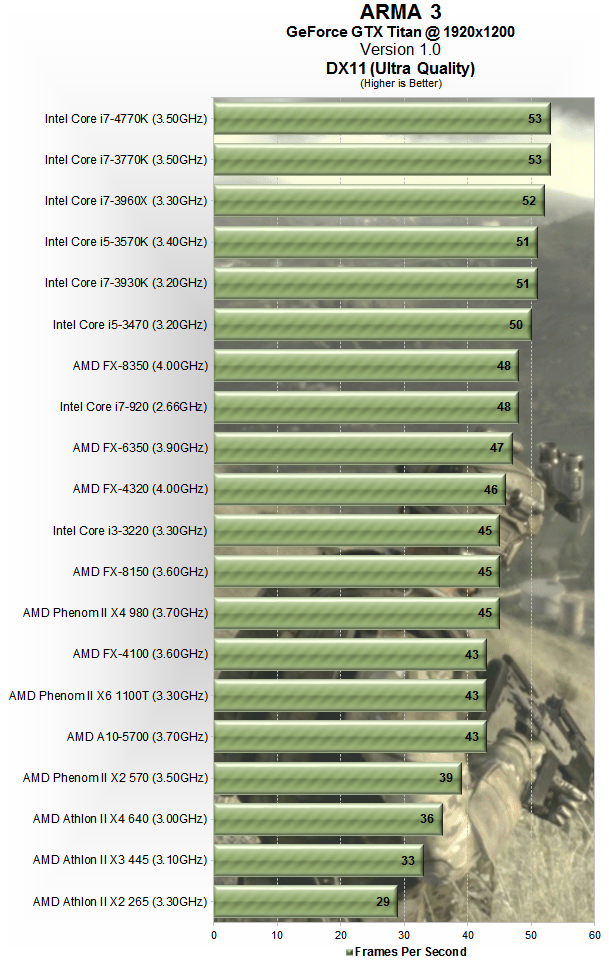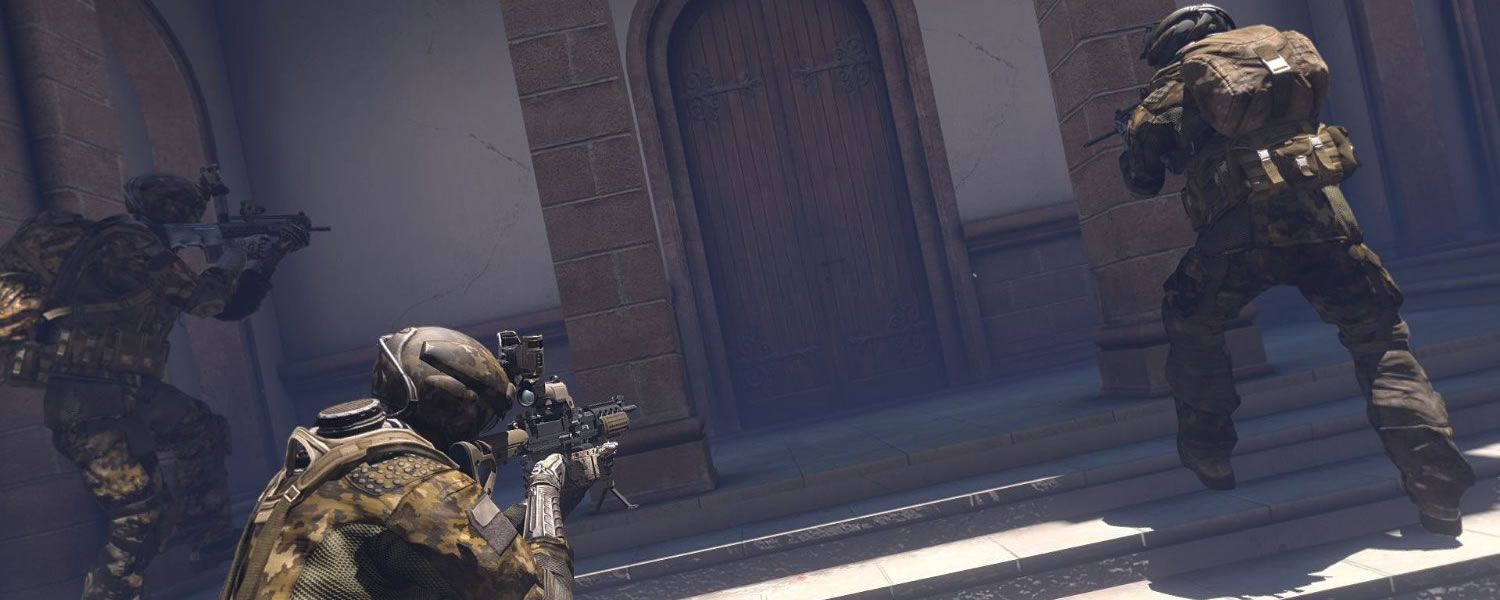Benchmarks: CPU Performance

We recorded a constant increase in performance when raising the Core i7-4770K's clock speed, which was a nice surprising considering how few games have allowed for that recently. There was a 38% boost in performance when going from 2.5GHz to 4.5GHz, and while margins became smaller as we dialed up the frequency, we still experienced a 4% change when shifting from 4GHz to 4.5GHz.

Considering the Core i7's overclocking results, we expected even bigger margins from the FX-8350, and that's exactly what we got. Moving the chip from 2.5GHz to 4.5GHz produced 58% more performance and with 52fps at 4.5GHz, the FX-8350 wasn't much slower than the i7-4770K – something we rarely see.

Given Arma 3's advanced AI and sprawling environments, we expected the dual and even older quad-cores to flop as we saw in Splinter Cell Blacklist, Company of Heroes 2, Metro Last Light and Crysis 3, but we received pretty consistent frame rates, akin to our results from BioShock Infinite and Tomb Raider. For example, the A10-5700 was able to land within 10fps of the Core i7-4770K – 19% slower, but you know that's not a big deal if you keep up with our performance reviews.
That said, the dual-core Phenom II X2 570 bombed out with 39fps, while all the Athlon II processors couldn't deliver acceptable performance. As expected, the Core i7 and Core i5 products lead the way and even the old Core i7-920 wasn't far behind. AMD users will want a Piledriver-based "Vishera" FX processor, while the Bulldozer-based "Zambezi" FX-8150 didn't perform too poorly despite being matched by a Core i3 chip.
